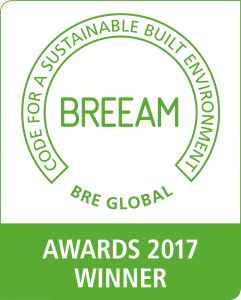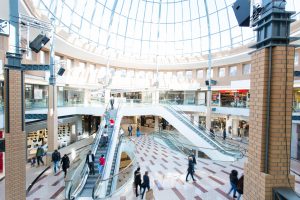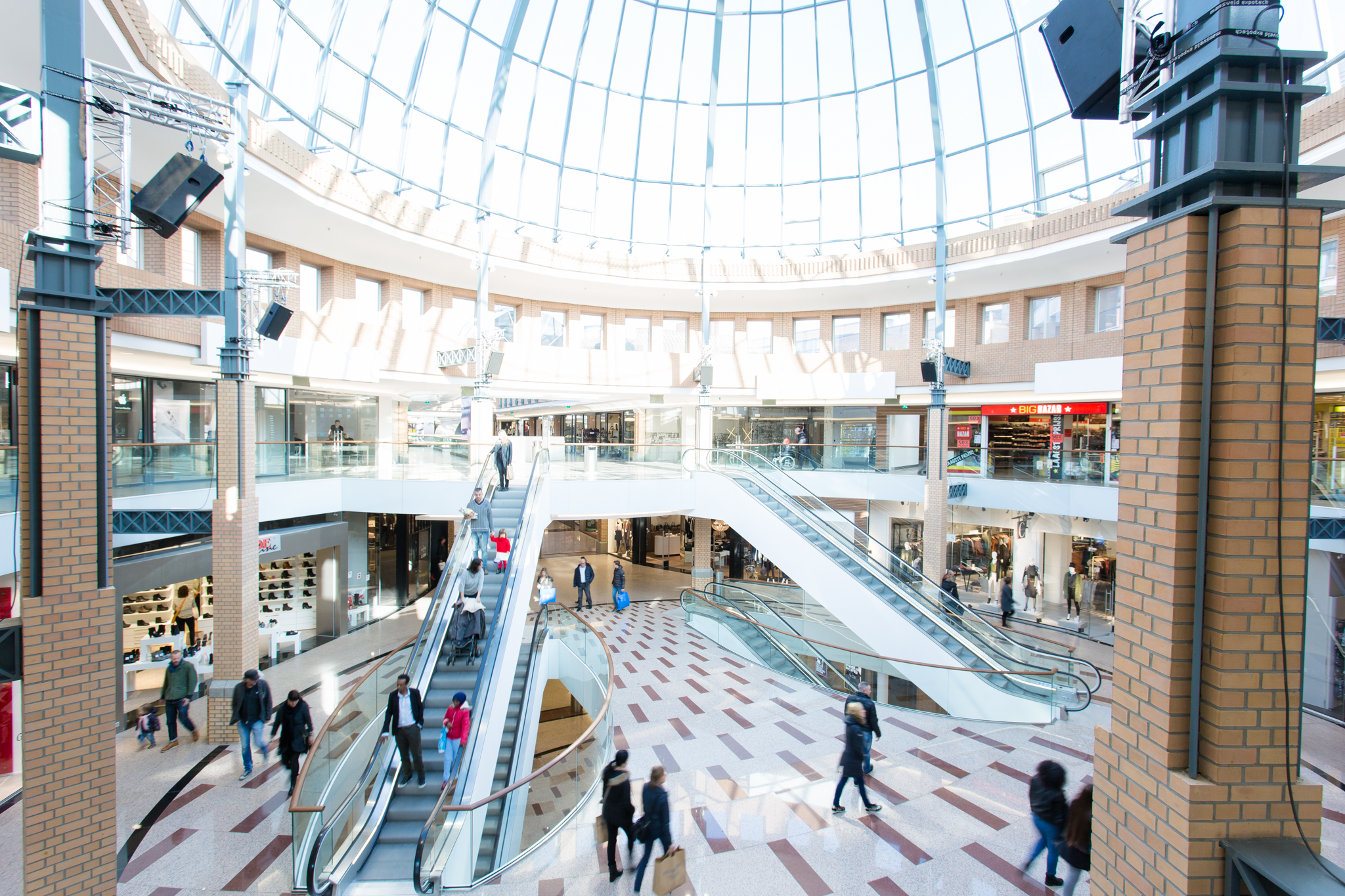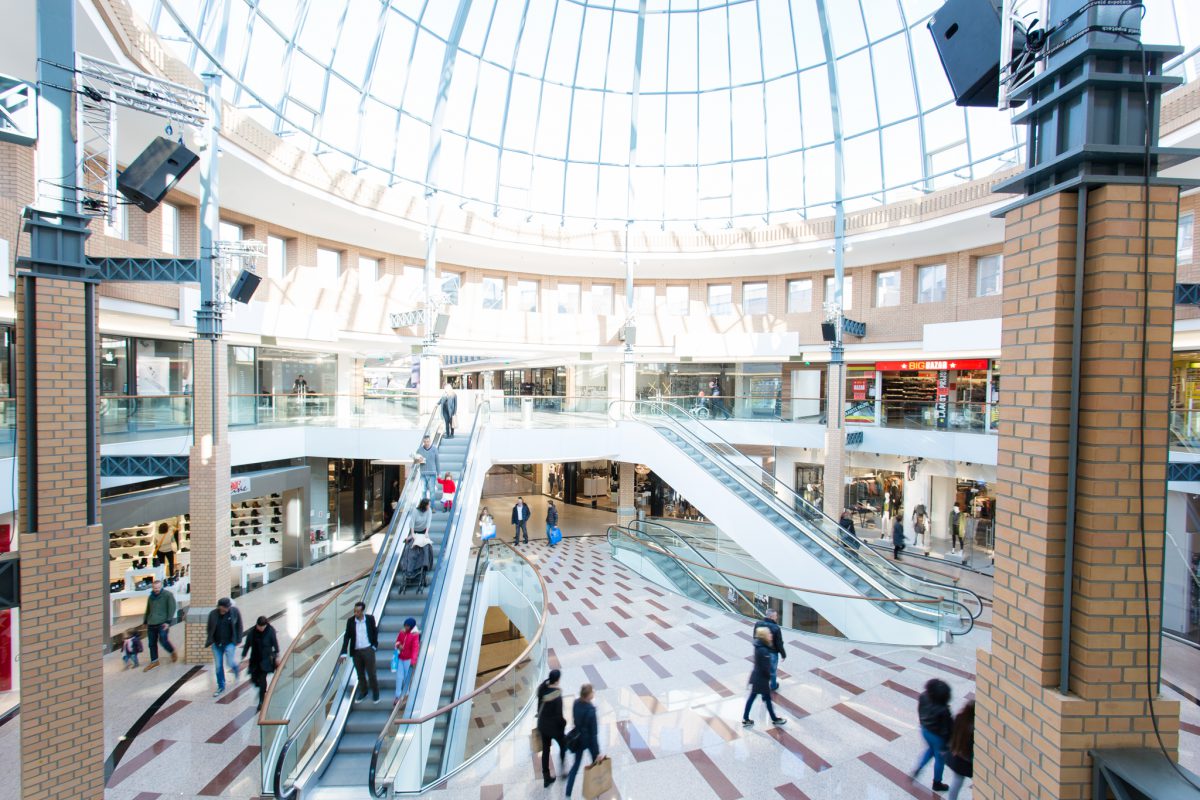A double BREEAM In-Use Outstanding shopping centre that demonstrates the real value of sustainability
Project Details
- Scheme & Version: BREEAM NL In-Use 2014 v1.0 Parts: 1 & 2
- Location: Eindhoven, Netherlands
- Size: 9,640 m2 (communal spaces, excl. retail units, 109 units and 40,046 m2)
- Certificate Number: 369-BIU-2013
- Asset Performance: 86.42% Outstanding
- Building Management: 90.82% Outstanding
The above information is for the original certification of this project, please reference GreenBookLive for current details

Project Team
- Building Owner: CBRE Global Investors
- Property Management: CBRE
- Sustainability Consultant: CBRE
- Architect: DunnettCraven (upgrade 2014-2016), Walter Brune Architekt Düsseldorf, Van Aken Architecten Eindhoven (existing building, 1992)
- Project Manager: Man&Meer
- BREEAM Assessor: W4Y (Jan Roersen)
- Contractor: Strukton Worksphere,STB, Webeasy, Herman de Groot Ingenieurs.
About the Project
Built in 1992, Heuvel Eindhoven is a large shopping centre in the portfolio of the CBRE Dutch Retail Fund.
Between 2010 and 2013, the centre saw a decline in the widest sense; service charges went up due to rising energy costs, footfall went down, as did tenant satisfaction. As a result, vacancy increased and the shopping centre faced a risk of becoming outdated.
In order to turn the tide, an integrated upgrade was started by the owner CBRE Global Investors, property manager CBRE and external parties. This involved technical aspects, hospitality and branding. Sustainability was regarded as a pivotal element in the upgrade to make the building more environmental sustainable, achieve a higher customer satisfaction and decrease the service charges, using all elements of ‘people, planet and profit’.
BREEAM In-Use was used to guide the team in the continuous improvement of the centre and as an inspirational way to monitor and celebrate progress.
Continuous Improvement
The process of upgrading the sustainability level began in 2012 and or each of the subsequent four years a BREEAM NL In-Use re-certification was carried out. With every re-certification, a higher BREEAM rating was achieved, leading to double Outstanding (under Part 1 – Asset and Part 2 – Building Management of BREEAM In-Use) after completion of the upgrade project.
As a result of the upgrade and the sustainability improvements, the shopping centre is currently outperforms on all aspects: the visitor numbers are the highest ever, the tenant satisfaction is the highest within the whole CBRE portfolio, energy and water consumption have decreased dramatically and the service charges have been reduced by a third.
This project shows that an increase in sustainability performance is linked to a better overall performance. Heuvel Eindhoven demonstrates that sustainability leads to a better quality building for the owner, management, occupiers and visitors, whilst simultaneously decreasing operating costs.
CBRE’s CSR strategy
For CBRE and CBRE Global Investors, corporate responsibility is fundamental to the business strategy, for investors, key stakeholders, and for the communities and companies in which they invest. This not only makes good business sense, but is the right thing to do.
CBRE Global Investors’ predecessor, ING REIM, was a founding partner of the Dutch Green Building Council and is very active in several DGBC project groups and the advisory board. CBRE Global Investors is also an active user of the BREEAM In-Use certification process, with more than 20 large shopping centres and offices certified in the Netherlands and multiple re-certifications. The CBRE Dutch Retail Fund is in the top 10% of most sustainable retail funds worldwide, according to GRESB.
Green Strategy and Environmental Features
The fundamentals of the sustainability strategy of the CBRE Dutch Retail Fund are based on investing in retail units with a high level of environmental sustainability, at locations that remain attractive for the long term.
CBRE consider sustainability as a catalyst for growth, as are confident that this contributes contribute positively to performance in the medium and long term. The Fund’s strategy is therefore focused on assets at prime locations and on properties equipped with high quality durable materials to meet future occupier demand. As a result of this long-term strategy, CBRE’s portfolio is actively managed and continuously improved by redevelopments and refurbishments.
Heuvel Eindhoven is an exemplar of this approach. The first BREEAM NL In-Use certification provided a ‘Very Good’ rating in 2012.
Step by step, the sustainability performance was improved, achieving ’Excellent’, and finally ‘Outstanding’ for both the Asset and Building Management under BREEAM In-Use. Ultimately, this is the goal for all CBRE’s prime assets within the portfolio.
As well as regular operations and maintenance, sustainability played a central role in every key decision within the upgrade. Where possible, the most sustainable option was chosen. Every procurement and tender for works was been carried out with the “best proven technology” principle in mind. This approach is reflected in the overall high BREEAM score on both Asset and Management.
Reduction of energy consumption by 38% by installing energy efficient LED lighting, elevators, escalators; replacing sliding doors by tourniquets to reduce heat loss; various sub-metering to monitor consumption; installation of a new BMS, fine tuning of HVAC installations and optimization of geothermal energy sources.
Sustainable cleaning and maintenance (use of bio-based cleaning products, emission free paints, coatings, adhesives); use of coolants (reduced amount) with low GWP / ODP, pollutant sensoring (CO / CO2 / NOx) and demand controlled (natural) ventilation in the public areas of the centre.
Green roof gardens with several elements for birds, insects and bats, use of local vegetation, rainwater collection for peak irrigation; reduced light pollution via reduced light intensity, smart timers (twilight switches) and only downward pointing lighting.
Reduction, monitoring of waste streams (7 different streams), monitored, benchmarked and charged per tenant.
Green purchasing (electricity and gas), integration of sustainability criteria in contracts for cleaning, maintenance and procurement – in order to reduce the carbon footprint during the entire life cycle of the asset.
Significant amount of green covenants (89%) and green leases (60%, with an aim of 100% in 2020) with tenants about environmental impact reduction, monitoring and reducing energy, waste and water consumption and sustainability communications with visitors.

